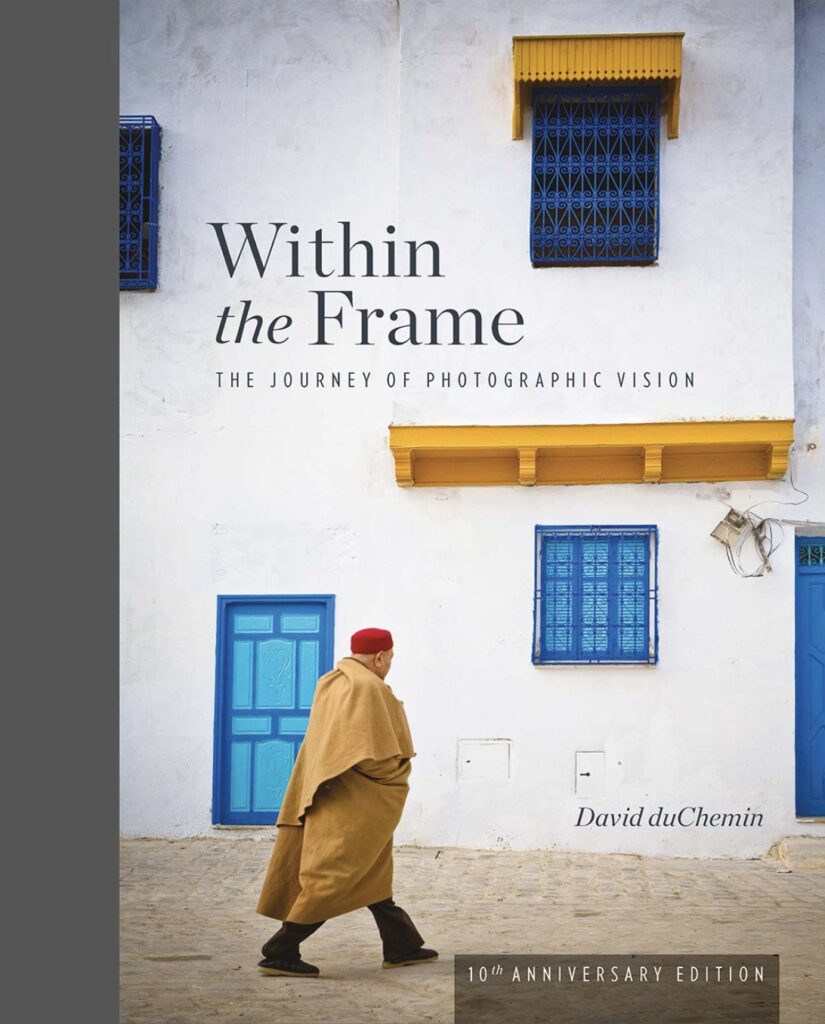My friend Jim Blomfield recommended David duChemin‘s book Within the Frame to me in November, and now I’m just getting around to reading it.
In a nutshell, this book is a great read because duChemin writes about the whys of photography rather than the hows. The book is similar, in a way, to Freeman Patterson’s Photography and the Art of Seeing in that the craft of photography rarely enters the discourse – the concepts of aperture, exposure, depth of field and so on are tangential subjects. In both books, the authors instead describe the creative process and in particular why they photograph.
There is a lot of insight in Within the Frame. duChemin’s subject matter is quite different from Patterson’s; duChemin’s subjects are people and cultures, and hence there are lots of environmental portraits, with a smattering of urban architecture. The thesis of the book is to explore the creation of images that tell a story, of not what a photograph is of but what a photograph is about. Here is a quote from page 23:
The subject of a photograph is not, for example, a Kashmiri man in front of his family. That’s the subject matter. The subject itself is the emotion, thought, or intangible that you are trying to express through the image. In this case, it’s the general concept of family and the specific concept of family dynamics in Kashmir. The subject of the photograph can be simple: family, beauty, color, or wonder- that intangible thing that you responded to when your inner photographer said “Oh! Oh! Shoot that!” or whatever it is your inner photographer says. Mine tends to be overly dramatic.
This is more than hair-splitting or semantics. Looking at things this way has profoundly changed the way I shoot. It has given me a paradigm through which I can more easily identify the story I’m trying to tell. When I am shooting an image of people in the rain in Vancouver, and I understand that, for me, in this moment, the subject is not the people in the rain, the subject is wetness itself, I can shoot this in the way that best communicates wetness. I might choose to drag the shutter and blur the rain. I might choose to shoot through the window of a coffee shop and capture the people in the rain through the raindrops themselves. I might make sure I capture a couple with umbrellas, or wait for a bus to drive past and shoot the resulting spray- all ways I can better shoot wetness. It’s an image of people in the rain, but it’s about wetness.
Recommended.

I’m glad you are enjoying the book. I’ve read it twice already and plan one more read before my next photographic trip.
I must purchase this book. I love the concept and how he mentioned that “inner voice” that comes naturally to people who love to take pictures. When a situation stirs an emotion in me, I yearn to photograph it. Sometimes, I am disappointed in the result because it isn’t what I saw. Now that I have read some of duChemin’s theory,I amexcited to purchase the book and learn more.
It all makes to sense to me. In order to depict what I saw and felt, I must understand the message the image is giving me and I must shoot it in a way that shares that story with others.